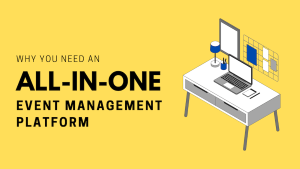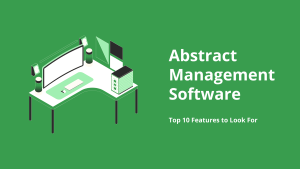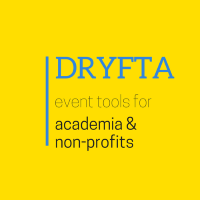Home > Blog > Abstract management software > What is an abstract management system?
What is an abstract management system & How does it work?
As the word suggests, an abstract summarizes a larger document, primarily used in academic content (such as a research paper). When several authors prepare their abstracts and submit it to a conference through an online channel, it is referred to as abstract submission. This process of abstract submission and management is where an abstract management system comes into play.
Abstracts management, i.e., the process of receiving, accepting, preparing, and reviewing abstracts, can be made easy & efficient via abstract management software.
It saves time and prevents any data loss
Instead of conventional manual work, an abstract management system assists in end-to-end management of abstracts, including setting content requirements and deadlines, forming a team, determining each person’s engagement, collecting and reviewing abstracts, and publishing the final proceedings. This allows staff to stay on top of the work, from managers overlooking the work to people responsible for doing the work. It enables all team members to stay organized and on the same page, which is the key to higher efficiency hence an optimal use of resources.
Still managing proposals and reviews through emails?
The traditional way of submitting and managing proposals or reviews is via email. This can be cumbersome for both the sender and the receiver because email is not categorized in any specific order. This information overload can be very confusing for the recipient and prevent them from working as efficiently as possible. There is no doubt that this is inefficient and can result in delays or loss of work.
Additionally, the submission email address is public, and anyone can send an email. These include spam and malware, which can put your data and privacy at risk. Moreover, there is no strict implementation of the deadlines. Also, authors cannot send feedback or edit their abstracts and reviews when submitting and managing proposals and reviews through email.
Why use an abstract management system instead of traditional email?
There is no doubt that email is a fast and easy way of communication. Anyone can send an email to anyone, regardless of their physical location, within seconds. Conferences can receive submissions instantly. But that’s the only advantage of using email to collect submissions. On the contrary, here are multiple benefits of using an abstract management system to collect submissions and reviews:
✅ Keeps the work organized
The abstract management system lets organizations categorize submissions based on the nearest deadline or a priority list compared to traditional email, which is raw data and needs close attention for efficient output.
✅ Monitors the deadlines
The system can remind the author about an incoming deadline. This can prevent any potential delays which might have occurred simply because the author lost track of time.
✅ Abstract Review made easy
Thoughtful feedback can be offered through the system allowing everyone to collaborate and constantly learn while completing the tasks, which is not readily possible when using emails.
✅ Improves collaboration
The abstract management system allows for better coordination among the organizing committee, which can be encouraging and can give them a sense of value resulting in higher motivation levels, ultimately benefiting the conference organizer by increased efficiency and therefore decreased costs.
This collaboration is possible by using email as well but is not as efficient. Conferences will need to post the updates only once within the abstract management system and everyone gets to see it rather than sending individuals emails to all the members after they join in.
✅ Secure and easy to use
Unlike emails, this is more private and only trusted people can access or share the data, which means greater security. It is easy and straightforward to use if the user follows the instructions provided.
✅ Maintains a searchable index of abstracts
There is no longer any need to maintain physical folders of all documents involved in the abstract management process. An abstract management system can maintain a searchable abstract archive, making documentation and record-keeping far more efficient.
✅ Scheduling Presentations
The organizing committee’s work does not end upon an abstract’s finalization (decision-making). Instead, there are multiple activities to be conducted beyond this step, including notifying authors and building an agenda. This is where the event scheduling feature of an abstract management system kicks in. This module helps generate a conference agenda out of abstracts that have been accepted, making event scheduling more convenient.
Final thoughts
The world and how everything operates is subjected to change depending on technological advancements. There is no denying that the introduction of email was a breakthrough in communication. In the fast-paced world where wireless connections like 5G are available, organizations need to adapt to any internet world changes. However, the world is even past this utility, making it mandatory for us to adjust to further advancements in the technological world.
An abstract management system is a more efficient and modern communication method that allows secure and organized data upload, which is why it can potentially replace the email system.
Related Searches
- Still Accepting Abstract Submissions Through Email?
- Guide for Writing Conference Abstracts
- Checklist for Successful Abstract Launch
- Abstract Book Builder for Conferences
- AI Quality Checks & Plagiarism Detection for Abstracts
- Advanced Auto-Assignment in Abstract Management
- Simple Bulk Download in Abstract Management
- Step-by-Step Guide to Setting Up Peer Review for Abstracts
- Complete Guide to Writing Abstracts [PDF]
- How to write Abstract for a Conference
- Collect Abstract Submissions Fees Online
The most-preferred abstract management system for universities & nonprofits. Learn more






